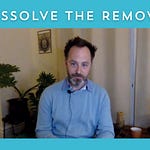“We were both in the fugue-state that exhaustion through repetition brings on, a fugue-state I’ve decided that my whole time playing tennis was spent chasing … a mental state at once flat and lush, numbing and yet exquisitely felt.”
– David Foster Wallace, A Supposedly Fun Thing I’ll Never Do Again
A few years ago, some friends and I took an intro to mountaineering course on the Wapta Icefield northwest of Banff in the Canadian Rockies. Every morning for five days, we clipped into a long rope, and walked single-file up the glacier next to sheer drop-offs.
Some days the sky was cobalt blue. Other days the combination of snowfall and diffuse sunlight turned everything white: no horizon line, no features, no direction. We used a compass to keep ourselves moving in a straight line, ice axes at the ready in case one of us were to suddenly disappear into a crevasse.
It was an exhilarating week — the friendship, the adventure, the self-sufficiency. The ridiculous perspective you get at 10,000 feet, where the scenery is so huge there’s simply no room to think about your problems. A good view sucks them right out of you; a good view for five continuous days resets the brain. All of us felt clear and settled and present.
At some point I realized that I was, in fact, at a meditation retreat – just not a mindfulness one. This was more about the body: hour after hour engaged in a single activity, attention riveted to my next footstep and the slithering rope in front of me. As DFW put it so beautifully, I spent hours in a mental state “at once flat and lush, numbing and yet exquisitely felt.”
Sometimes this is the practice we really need. There’s a dimension of human happiness that depends not on panning back into more awareness, but on plunging in to less. It has to do with our capacity to get absorbed in experience.
This is a path of concentration, but not the Buddhist kind, not exactly. It’s bigger than that, more inclusive of more kinds of activities. Its external form may look like going for a run, or drawing on a canvas, or vacuuming around the house. Endless variations. Its internal form, however, is always the same: a one-pointed focus, a mental settling, a growing sense of disappearing into the action.
I watch our boys – three and six – engage in it every day: they count numbers out loud and walk in circuits around the room, anywhere from five minutes to an hour. This syncing together is pleasurable for them, and self-regulating – particularly if there’s stress in the house.
Many of us have experienced the fruit of this kind of commitment. We may not realize there are ways of increasing any activity’s potency and settling effect. It has to do with how much of our total attention we bring to that activity.
There’s a cruel human calculus where every time attention splits, the thing we’re paying attention to becomes exactly half as rewarding. My own attention span is often chronically divided, one part on my physical surroundings, one part worrying about the state of the world, and one part self-conscious about how I’m coming across. In these cases, my attention is like a frayed braid of thin waving strands. Thin strands = a thin world. No single strand is satisfying, to say nothing of the cumulative effect of all that half-worrying.
By contrast, as we bring more strands together, the braid of attention gets thicker and stronger and whatever we’re doing becomes inherently more rewarding. Amazingly, a lot of the fulfillment we experience here is content-agnostic, that is, what we focus on is less important than how much of ourselves we devote to it. I’ve experienced immense satisfaction simply from listening to the hum of an air vent, something I try to remind myself of later, when I’m back in the world of managing my endless (exhausting) preferences.
When people tell me they’re “too ADHD to meditate,”1 one of my suggestions is to get absorbed in something else instead. Nature, movement, singing, drawing, knitting, gardening, building. Where is there a pre-existing interest that can be used as an access point to absorption? And what happens if we honour this activity not as a superfluous hobby or indulgence, but as a central pillar in our mental, emotional, and spiritual health?
Two options for today’s meditation practice. Option one is to ditch the seated practice, and go get absorbed in some other physical or creative activity. Think: what are you doing in life when you find yourself losing track of time? Are there particular activities or commitments that reliably have this effect for you, and also feel inherently healthy and life-giving? If so, this is important information. Consider doing them more often, with the clear intention to commit all of yourself – all strands of attention – to the practice.
Option two: join me for a mantra practice.
A great many people – myself included – find repeating a soothing sound or phrase to be an easy way to get absorbed. It’s one reason Transcendental Meditation (TM) is so popular, in addition to David Lynch’s weirdly charismatic endorsement. Mantras work, they work fast, and you don’t have to shell out fifteen hundred bucks to tap into their goodness. They can also be helpful for those who struggle with overthinking. A mantra gives the mind something to do, a steady internal rhythm that can be a nice reset for our overtaxed nervous systems.
Let’s tap in together.
Jeff
A few quick notes—
The next Do Nothing Project happens tonight – Sunday, September 28 – at 8pm EDT, on Youtube. Link here. Soon it will move to Substack Live, so be ready for that!
New to Home Base? We have over 50 guided meditations in our library. Check out the most popular ones here.
THIS WEEK ON THE MIND BOD ADVENTURE POD
When it comes to knowing ourselves, we talk about mindfulness, creativity, career… basically everything except sex. But as Dr. Juliana Hauser argues, sexuality might be the most direct doorway into who we really are. In this episode, she takes us past the performance of sexiness into the raw territory of authenticity, agency, and connection. Dr. Juliana is a counselor and family therapist whose work shows up in therapy rooms, TED talks, classrooms, and … as of today (🥳) in her brand new book A New Position on Sex. Enjoy!
Being Human Takes Practice – North Carolina
November 14-16, 2025
Art of Living Retreat Center, North Carolina
This retreat explores what meditation teaches us about being human. It teaches us about resistance and delusion. It teaches us about healing stuck emotions and expanding stuck views. It teaches us mercy and forgiveness, majesty and humility. All this and more happens when we sit and do nothing. It makes me want to weep, or laugh uproariously, or pass out in a patch of drool. Maybe you will too – come find out!
The subject of one-pointed attention is tricky for some neurodivergent folks, especially ADHDers like myself. Either we over-compensate with too much hyper-focus, thus ignoring the needs of our bodies to stretch, or drink, or eat, or sleep, or simply to move on to an actual priority. Or we can’t focus at all – too many competing inputs, and trying to commit to any one thing feels squirmy and claustrophobic and impossible.
My advice for hyperfocusing is to practice keeping 20% of attention lightly monitoring your body, so you’re more attuned to your body’s needs, and can take breaks accordingly. My advice for working with a skittering attention style is to deliberately include – or create – more inputs. I have an ADHD meditation teacher friend who imagines complex visuals when he meditates, in order to keep his busy mind occupied. Others mix the breath with visualization, or – as in yoga – with synchronized movement. Still others choose not to focus on any specific thing at all, and instead open their attention outward to include the whole field of awareness, letting all sounds and sights and sensations come and go. All of these practices get easier with time, the more you build up the neural pathways.

















